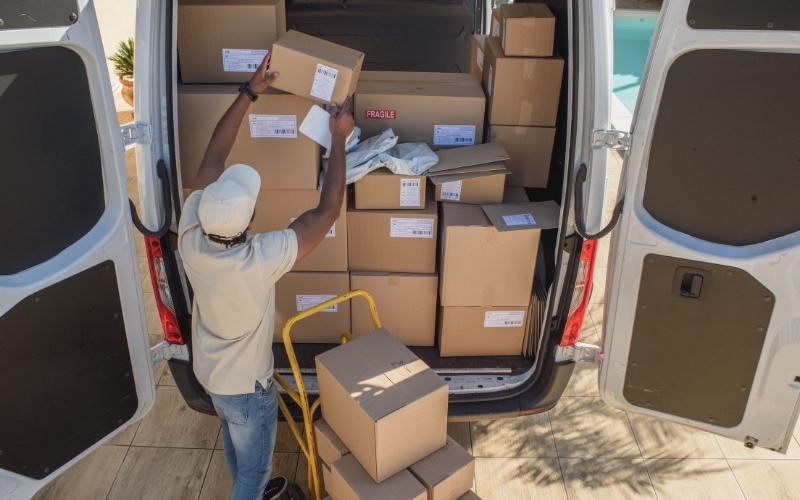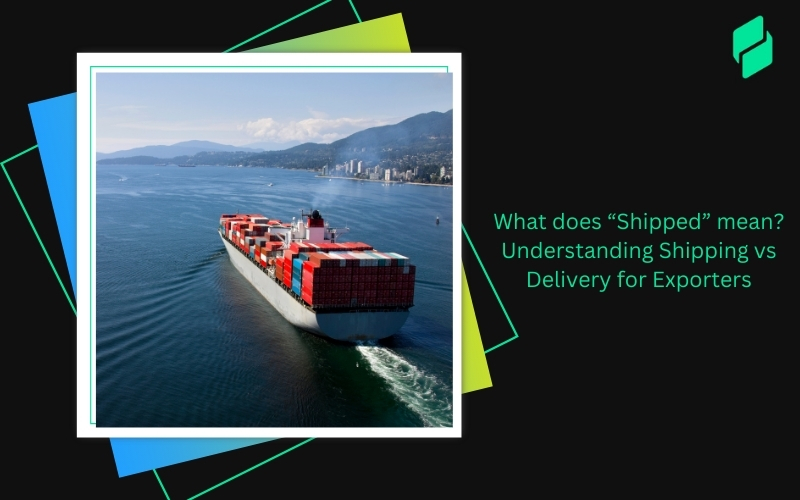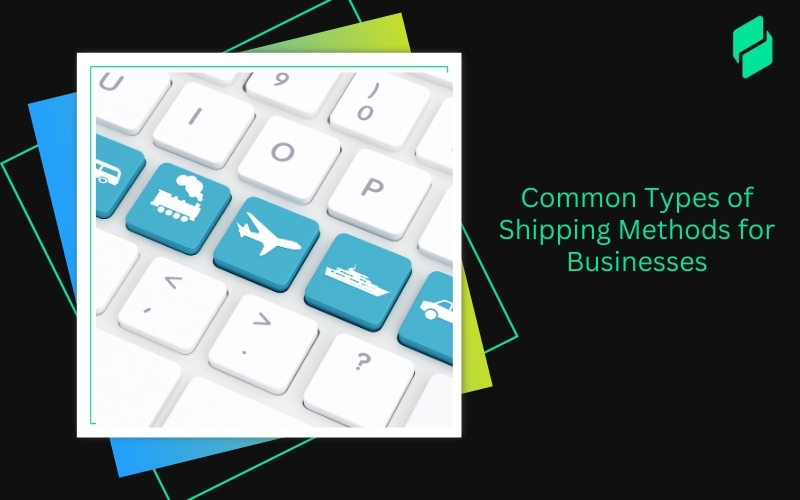Optimize your business: use unlimited savings with Pazago fulfilled now!
Get Started ->As an exporter, you've likely dealt with the frustration of shipping delays and unclear statuses. When your goods leave the warehouse, but delivery is delayed, it's stressful for both you and your customers. The constant uncertainty about delivery times can cause confusion and disrupt your operations.
According to Global Manufacturing PMI, compiled by S&P Global Market Intelligence, shipping delays have been growing. Last year, the number of manufacturers reporting a decline in export orders due to shipping issues was nearly 5 times the long-term average. This trend has made shipping reliability even more crucial for exporters.
In this blog, we'll explore what is shipped, the key differences between “shipping” and “delivery” statuses, why understanding these terms is critical for you as an exporter, and how it can help reduce confusion for both you and your buyers.
Key Takeaways:
- “Shipped” refers to when goods leave your warehouse, but doesn’t mean they’re delivered yet.
- Shipping and delivery are two separate stages; understanding the difference helps manage expectations.
- Common shipping statuses, such as “in transit” or “out for delivery,” guide you and your customer.
- Shipping and delivery dates differ and should be clearly communicated to avoid confusion.
- Factors like transport mode, customs, and last-mile delivery affect both timelines and customer satisfaction.
What is “Shipped”?

The term “shipped” refers to when an order has left your warehouse or dispatch center. However, it doesn't mean the product has reached the buyer's doorstep just yet. For many exporters, confusion arises when customers assume that once the product is marked as “shipped,” it's almost delivered.
For example, if you're exporting goods from Pune to London, the moment the goods leave your warehouse in Pune and are en route to JNPT (Jawaharlal Nehru Port Trust), they are marked as "shipped." At this stage, they may still be in transit within India, awaiting clearance or shipment.
Understanding the precise meaning of “shipped” can help you better manage both your internal processes and customer expectations. It's essential to set realistic delivery windows to avoid disappointing buyers when their orders don't arrive on time, despite being marked as “shipped.”
Now that we’ve established what is shipped, it’s time to address a common misunderstanding. Many exporters and customers confuse this term with delivery, which causes frustration when timelines are not met.
Also Read: Understanding Delivery Order in Shipping Terms
Shipping vs. Delivered: Why They're Not the Same?
It's crucial to understand that “shipping” and “delivery” are two distinct stages in the export process. Shipping refers to the moment goods leave your warehouse or facility, while delivery means the goods finally reach your buyer's location. Misunderstanding these stages can lead to frustration and confusion for both you and your customers.
Going back to our example, “shipped” was when the goods left your warehouse in Pune and headed to JNPT. Once the goods clear customs and reach the importer’s location in London, they are marked as "delivered." This stage signifies that the goods have arrived at their final destination and are received by the buyer.
The gap between shipping and delivery can be significant, particularly when goods must pass through customs or encounter other delays in transit. As an exporter, it's essential to set clear expectations with your buyers about the difference between these two terms. Just because an order is shipped, it doesn't mean the customer will receive it soon after.
With a clear distinction between shipping and delivery, it's easier to understand the various steps involved. Let's take a closer look at common shipping statuses and their impact on the overall process.
Also Read: Understanding Proof of Delivery: A Guide for Businesses and Consumers
Common Shipping Statuses Explained

When you manage shipments, it's essential to understand the various shipping statuses you will encounter. These statuses provide insight into where the goods are in the journey from your warehouse to your buyer's location. Understanding these terms helps set clear expectations and prevent misunderstandings.
Below are the most common shipping statuses you will likely see and what they mean for your export process:
- Processed / Packed: This status indicates that the order has been prepared and is ready to be shipped. The goods are packed and waiting for dispatch.
- Dispatched / Shipped: When goods leave your warehouse and are handed off to a carrier, they're marked as dispatched or shipped. This stage can take time due to customs or transit.
- In Transit: The goods are on the way to the destination but have not yet reached the final destination. They could be traveling by air, sea, or land.
- Customs Clearance (Export/Import): This status indicates that the shipment is undergoing customs checks. The goods are typically on hold at customs for documentation and inspection before continuing to the next stage.
- Arrived at Destination Hub: The goods have reached a regional or local hub in the destination country and are being sorted for last-mile delivery.
- Out for Delivery: This status indicates that the goods are with the local courier and on their way to the buyer's address.
- Delivered: Once the goods reach the buyer's location and are received by the recipient, the status will show as “delivered.”
- Failed Delivery Attempt / Returned: If the carrier is unable to deliver the shipment (e.g., wrong address, recipient unavailable), the goods may be returned or held at a local depot.
With the shipping statuses in mind, it's essential to understand the timeline between the shipping and delivery dates. These dates are often misunderstood, but knowing the difference can help you avoid confusion with your customers.
Also Read: International Freight Shipping: Definition And Key Stages
Shipping Date vs Delivery Date: Key Differences
As an exporter, it's essential to understand the difference between shipping and delivery dates. These two dates serve different purposes in the shipping process and can impact both your planning and customer expectations. The shipping date refers to when your goods leave your warehouse, while the delivery date is when the goods actually reach the buyer.
For example, if your shipment is dispatched from your warehouse in Pune on January 10th, this is the “shipping date”. On the other hand, if the goods are received by the buyer in London on January 20th, this would be the “delivery date”.
Confusion between these dates can lead to misunderstandings with buyers, mainly when delays occur. To better manage this, it's helpful to clearly distinguish between these two dates.
Below is a table showing the key differences between shipping and delivery dates, and how they impact your export process:
Now that we’ve outlined the key differences between the shipping and delivery dates, it’s essential to understand what factors can influence these timelines. Various elements can either shorten or extend the process, and knowing these can help you avoid delays.
Also Read: Standard Shipping vs Express Shipping: A Simple Guide
Factors That Affect Shipping & Delivery Timelines

Several factors can affect both the shipping and delivery timelines for your export goods. Understanding these factors helps you better manage expectations and avoid unexpected delays. These factors can change depending on the type of goods being shipped, the country it's going to, and the method of transport used.
Below are the key factors that influence shipping and delivery times for exporters:
- Mode of Transport: Air freight is usually quicker than sea freight, but it often comes with a higher cost. Selecting the correct shipping method can have a significant impact on delivery times.
- Distance: The farther the destination, the longer the transit time. International shipments often experience more delays due to longer distances.
- Customs Clearance: Delays in customs are common and can extend the shipping process, especially if paperwork or regulations are not appropriately handled.
- Freight Forwarder Efficiency: The reliability of your freight forwarder impacts the shipping timeline. A slower or less reliable partner can cause delays.
- Weather Conditions: Unpredictable weather events like storms or fog can delay shipments, especially those involving sea or air transport.
- Last-Mile Delivery: Once the goods reach the destination country, the efficiency of the local courier or delivery service significantly impacts how quickly the goods are delivered.
- Destination Country Regulations: Different countries have varying regulations that can slow down the delivery process. Being aware of these can help prevent delays.
Now that we've discussed the various factors that affect shipping and delivery, it's essential to turn our attention to how you communicate these variables to your customers.
Also Read: Understanding Last Mile Delivery in Logistics
How Exporters Should Communicate Shipping vs Delivery?
Clear communication with your customers about the difference between shipping and delivery can prevent confusion and frustration. By setting accurate expectations upfront, you can maintain trust and ensure smoother transactions. Properly explaining these terms also helps manage customer satisfaction, especially when delays are inevitable.
Here are some key strategies to enhance communication with your customers:
- Set Realistic Expectations: Inform customers that “shipped” doesn't mean immediate delivery. Explain that there is a journey from dispatch to final delivery.
- Use Clear Tracking Information: Provide tracking links and updates so customers can follow their order's progress at every stage, from shipping to delivery.
- Define Estimated Delivery Dates: Offer estimated delivery dates based on realistic transit times, considering customs and transport methods.
- Highlight Potential Delays: Let customers know if certain factors, like customs clearance or weather, may impact the shipping or delivery times.
- Be Transparent About Responsibilities: Use Incoterms to clearly explain who's responsible at each stage of the shipment and where the risks are transferred.
- Communicate with Proactive Updates: If there's a delay or change in status, keep your customers informed with regular updates. This builds trust and reduces frustration.
Clear communication can significantly reduce confusion and improve customer satisfaction. To make this easier, platforms like Pazago offer solutions to help manage these expectations more effectively.
Also Read: Understanding Last Mile Delivery in Logistics
How Pazago Can Help Exporters Manage Shipping?

Using a reliable platform like Pazago can simplify the complexities of managing shipments and ensuring timely deliveries. With Pazago, exporters can stay on top of their shipments, streamline processes, and reduce the potential for delays. The platform is designed to provide clarity on the shipping and delivery journey, which helps you and your customers manage expectations more effectively.
Here's how Pazago can assist in making your shipping process smoother:
- Reliable Cross-Border Shipping: Pazago optimizes routes to avoid common delays and ensure timely deliveries, even when logistics are complex.
- Real-Time Tracking & Transparency: Pazago offers live tracking and alerts for conditions like temperature, providing peace of mind about the shipment's safety.
- Easy Communication: The platform connects you with freight forwarders, buyers, and customs agents, ensuring better coordination and quick issue resolution
- Built-In Quality Inspections: You can schedule and manage quality inspections through Pazago, ensuring compliance with global safety standards before goods are shipped.
- Digital Document Management: Pazago allows you to store and access invoices, customs forms, and certificates, reducing errors and speeding up clearance..
- Smart Financial Solutions: Pazago's financial tools help you manage payments, currency conversion, and financing, making large shipments easier to handle and manage.
With Pazago's support, you can ensure smoother shipments, more transparent communication, and better management of both shipping and delivery timelines.
Conclusion
Understanding what is shipped and how it differs from “delivered” is crucial for exporters like you who need to manage both logistics and customer expectations. Clear communication of shipping statuses can help reduce confusion, improve customer satisfaction, and ensure smoother operations. By effectively managing your shipping and delivery timelines, you can prevent the common errors that cause delays and disappoint customers.
If you're looking for a reliable solution to simplify your shipping process and manage your export logistics more effectively, Pazago can help. With tools that provide real-time tracking, document management, and easy communication with freight forwarders and customs agents, Pazago ensures that your shipments are handled efficiently from start to finish.
Book a demo today to see how Pazago can help you improve your shipping and delivery process, reduce delays, and keep your customers happy.
FAQs
1. How can I track the progress of my shipment after it’s been marked as “shipped”?
Once your shipment is marked as "shipped," you can track its progress using the tracking number provided by your carrier. Most carriers offer real-time updates on the location and status of your goods.
2. What happens if my shipment is delayed during transit?
Delays can happen due to factors like weather, customs clearance, or transport issues. It’s essential to stay in contact with your shipping provider for updates and to inform your customer of any potential delays.
3. Can I change the delivery address once the shipment has been dispatched?
Changing the delivery address after dispatch can be complicated and may result in additional charges. Contact your carrier immediately to inquire if this is possible and to understand any potential costs or delays.
4. How do I ensure my products clear customs without issues?
Proper documentation and compliance with the destination country’s regulations are key. Ensure all required forms, invoices, and certificates are accurate and submitted in advance to avoid customs delays.
5. What should I do if my customer hasn’t received their package on the estimated delivery date?
If a customer hasn’t received their package on time, check the shipment’s tracking information for updates. If there’s no information, contact your carrier for clarification, and keep your customer informed about the status.


.png)








